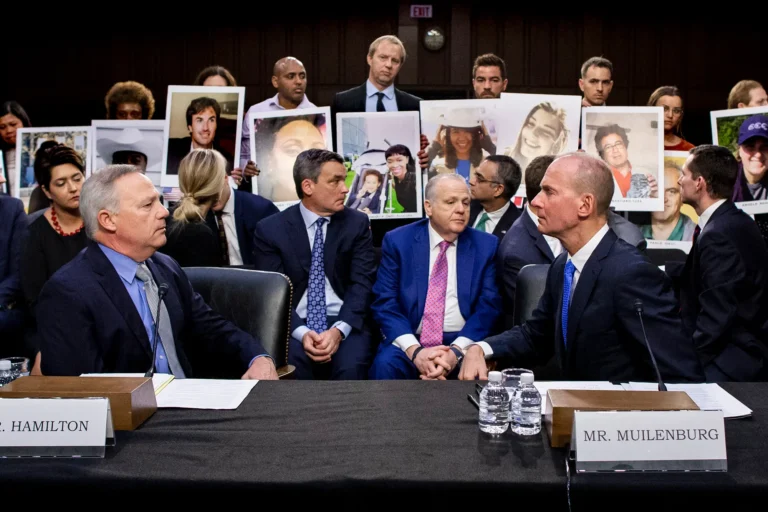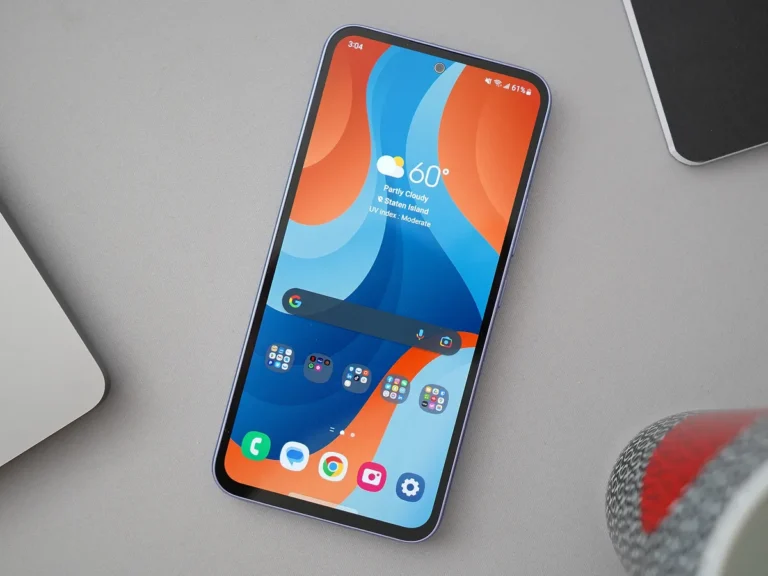Monitoring Influencer Marketing Success in 2024:Welcome to the exciting world of influencer marketing! In today’s digitally-driven landscape, where social media reigns supreme, influencers have become the lifeblood of successful brand campaigns. These charismatic individuals possess the power to captivate audiences and sway purchasing decisions like never before. But with so many influencers out there, how do you choose the right ones for your brand? And once you’ve enlisted their services, how can you measure the success of your influencer marketing efforts? Fear not – in this blog post, we’ll explore all these topics and more. So grab a seat and get ready to dive into a realm where authenticity meets influence – it’s time to monitor influencer marketing success in 2024!
Table of Contents
The Rise of Influencer Marketing
In recent years, we’ve witnessed a meteoric rise in the world of influencer marketing. Once considered a niche strategy, it has now become an essential tool for brands looking to connect with their target audience in a more authentic and relatable way.
But what exactly is influencer marketing? At its core, it involves partnering with influential individuals who have built sizable online followings across social media platforms such as Instagram, YouTube, TikTok, and more. These influencers are seen as experts or trendsetters within their respective niches and hold the power to sway consumer opinions and purchasing decisions.
The appeal of influencer marketing lies in its ability to cut through the noise of traditional advertising methods. Instead of bombarding consumers with intrusive ads, brands can leverage influencers’ credibility and trustworthiness to organically promote their products or services.
With the rise of social media platforms and the increasing number of users flocking to them daily, influencers have gained immense popularity. They offer a fresh alternative that resonates with audiences on a deeper level by providing valuable content that aligns with their interests and lifestyles.
Moreover, influencer marketing allows brands to tap into highly targeted demographics effortlessly. By collaborating with influencers whose follower base matches your ideal customer profile, you can reach potential customers who are already interested in your industry or product category.
It’s important to note that authenticity plays a pivotal role in successful influencer campaigns. Audiences crave genuine connections rather than blatant advertisements. That’s why finding influencers whose values align with your brand’s mission is crucial – they will be able to seamlessly integrate your messaging into their content without compromising integrity.
As technology continues to evolve at lightning speed, so too does the realm of influencer marketing. In 2024 and beyond, we expect even greater innovations that will further shape this dynamic landscape – from augmented reality filters enabling virtual try-ons endorsed by influencers to seamless e-commerce integrations directly within social media apps themselves.
How to Choose the Right Influencers for Your Brand
When it comes to choosing the right influencers for your brand, there are a few key factors you should consider. Identify your target audience and understand who they follow and engage with online. This will give you an idea of the type of influencer that would resonate with them.
Next, look at the influencer’s content and ensure that it aligns with your brand values and messaging. Authenticity is crucial in influencer marketing, so make sure their content feels genuine and not forced.
Additionally, consider the influencer’s engagement rate. While follower count is important, it doesn’t necessarily guarantee high levels of engagement. Look for influencers who have a loyal following that actively engages with their posts through likes, comments, and shares.
Another factor to take into account is the influencer’s reach. Consider whether you want to work with micro-influencers who have a smaller but highly engaged audience or macro-influencers who have a larger reach but potentially less targeted followers.
Don’t forget to analyze past collaborations the influencers have done. Look at their previous sponsored posts and evaluate how well they integrated brands into their content without compromising authenticity.
By considering these factors when choosing influencers for your brand, you can ensure that your partnerships are successful in reaching your target audience effectively!
Measuring Success: Metrics and Tools for Tracking ROI
In the world of influencer marketing, measuring success is crucial to determining the effectiveness of your campaigns. Gone are the days when brands would simply rely on vanity metrics like follower count or likes. Today, there are more sophisticated metrics and tools available to track return on investment (ROI) and ensure that your influencer partnerships are yielding tangible results.
One important metric to consider is engagement rate. This measures how actively involved an audience is with an influencer’s content. Look beyond likes and comments – focus on metrics like shares, saves, click-through rates, and time spent on a webpage after clicking a link shared by an influencer.
Another key metric is conversion rate. This tracks how many people actually took action after being exposed to your brand through an influencer campaign. Whether it’s making a purchase, signing up for a newsletter, or downloading an app – tracking conversions will give you valuable insights into the impact of your collaborations.
To accurately measure these metrics and track ROI effectively, various tools can be utilized. Social media analytics platforms provide in-depth data about engagement rates across different platforms as well as demographic information about followers. URL tracking tools help attribute conversions back to specific influencers or campaigns by assigning unique links to each partnership.
Additionally, affiliate marketing programs allow you to set up commission-based partnerships with influencers where they earn a percentage from sales generated through their promotional efforts. By monitoring affiliate revenue generated by influencers individually or collectively over time, you can gain valuable insights into their performance.
It’s worth noting that while metrics play a vital role in measuring success in influencer marketing campaigns; it’s equally important not to overlook qualitative feedback from customers who have been influenced by these collaborations. Gathering customer testimonials or conducting surveys can provide additional insights into consumer perceptions of your brand post-campaign.
Measuring success in influencer marketing involves going beyond surface-level vanity metrics and focusing instead on engagement rates, conversion rates, and qualitative feedback. Utilizing tools such as social media
Case Studies: Successful Influencer Campaigns
In the world of influencer marketing, success stories are aplenty. Brands have leveraged the power of influencers to boost their reach and achieve impressive results. Let’s take a look at some captivating case studies that showcase the effectiveness of influencer campaigns.
One such example is Glossier’s collaboration with beauty vlogger, Emily Weiss. By partnering with Weiss, Glossier was able to tap into her loyal following and establish credibility in the beauty community. The campaign resulted in a significant increase in brand awareness and sales as followers flocked to try out Glossier’s products.
Another noteworthy case study is Nike’s partnership with professional athletes like Serena Williams and Cristiano Ronaldo. By aligning their brand with these influential figures, Nike successfully positioned themselves as leaders in sports apparel. Their campaigns not only generated buzz but also drove up sales for their athletic gear.
Fashion retailer Zara also harnessed the power of influencers by collaborating with fashion bloggers during Fashion Week events. These partnerships allowed Zara to showcase its latest collections through highly engaging content on social media platforms, resulting in increased brand visibility and customer engagement.
The success of these influencer campaigns can be attributed to various factors such as careful selection of influencers who align with the brand’s values and target audience, creative content creation that resonates with followers, and strategic distribution across multiple channels.
These case studies serve as inspiration for brands looking to embark on successful influencer marketing initiatives. However, it’s crucial for each brand to identify its unique goals and objectives when choosing influencers for their campaigns while ensuring authenticity remains at the forefront.
By constantly learning from past successes while staying adaptable to changing trends and consumer behavior, brands can continue reaping rewards from effective influencer marketing strategies well into 2024
The Future of Influencer Marketing: Predictions and Trends
As the digital landscape continues to evolve, so does influencer marketing. In 2024 and beyond, we can expect to see some exciting trends and predictions that will shape the future of this powerful marketing strategy.
Personalization will become even more crucial in influencer campaigns. Brands will need to find influencers who align closely with their target audience’s values and preferences. This means moving away from simply looking at follower counts and focusing more on niche influencers who have a highly engaged following.
Additionally, video content is expected to dominate the influencer marketing space. With platforms like TikTok continuing to rise in popularity, brands will need to adapt by creating engaging video content that grabs attention quickly.
Another trend we can anticipate is the growth of micro-influencers. These are individuals with smaller but dedicated followings who can offer authentic recommendations for niche products or services. By partnering with micro-influencers, brands can tap into a loyal fan base and build strong relationships with their target customers.
Moreover, authenticity will remain paramount in influencer collaborations. Audiences are becoming increasingly discerning when it comes to sponsored content, so brands must work closely with influencers to create genuine partnerships that resonate with their followers.
Emerging technologies such as virtual reality (VR) and augmented reality (AR) may play a significant role in influencer marketing in the future. Imagine being able to virtually try on makeup recommended by an influential beauty blogger or experiencing a travel destination through VR before booking your trip!
In conclusion,
These predictions give us just a glimpse into what lies ahead for influencer marketing – an ever-evolving landscape driven by personalization, video content dominance, micro-influencers’ rise powerfully combined with authenticity’s enduring importance Authenticity’s enduring importance combined powerfully alongside the emerging potential brought forth by technologies like VR and AR.. By staying ahead of these trends and embracing new strategies, brands can harness the full potential of influencer marketing and continue to connect
Common Pitfalls to Avoid in Influencer Marketing
- Lack of Authenticity: One of the biggest pitfalls in influencer marketing is partnering with influencers who don’t align with your brand values or target audience. It’s crucial to choose influencers whose content and beliefs resonate with your brand, as this ensures authenticity and credibility.
- Overlooking Engagement Rates: While follower count is important, it’s not the only metric that matters. Many brands make the mistake of solely focusing on an influencer’s number of followers without considering their engagement rates. High engagement indicates a genuine connection between the influencer and their audience, making them more likely to drive conversions for your brand.
- Ignoring Micro-Influencers: Don’t underestimate the power of micro-influencers! These individuals may have smaller follower counts but often boast highly engaged audiences within specific niches. Collaborating with micro-influencers can result in more targeted reach and higher conversion rates compared to working solely with macro-influencers.
- Lack of Clear Goals and KPIs: Before embarking on an influencer campaign, clearly define what you wish to achieve and establish key performance indicators (KPIs) accordingly. Whether it’s increasing brand awareness, driving website traffic, or boosting sales, having measurable goals helps track success effectively.
- Inadequate Monitoring and Measurement: Without proper monitoring tools in place, it becomes challenging to measure the success of your influencer campaigns accurately. Invest in robust analytics platforms that provide insights into metrics like reach, impressions, engagement rates, conversions, and ROI – allowing you to optimize future campaigns based on data-driven decisions.
6.Working With Unreliable Influencers: Always conduct thorough research before collaborating with influencers – verify their credentials; review past collaborations; assess whether they engage genuinely with their audience; investigate any controversies associated with them; ensure they comply with FTC guidelines regarding disclosures – all these factors contribute significantly towards building a successful partnership.
Conclusion : Monitoring Influencer Marketing Success in 2024
As we look ahead to the future of influencer marketing, it is clear that this strategy will continue to evolve and play a significant role in brand promotions. However, with the ever-changing landscape of digital marketing, it is crucial for businesses to monitor their influencer campaigns closely and measure their success using relevant metrics and tools.
One key aspect of monitoring influencer marketing success lies in selecting the right influencers for your brand. By carefully vetting potential influencers based on relevance, reach, engagement rates, and audience demographics, you can ensure that your message reaches the right target audience effectively.
To assess the effectiveness of your influencer campaigns, tracking ROI through various metrics is essential. Metrics such as follower growth rate, engagement rate (likes/comments/shares), website traffic referrals from influencers’ content links can provide valuable insights into campaign performance. Utilizing dedicated tools like social media analytics platforms or affiliate tracking software can simplify data collection and analysis.
Examining successful case studies can also offer valuable lessons for monitoring influencer marketing success. By studying how brands have achieved positive results through strategic partnerships with influencers across different industries or niches, you can gain inspiration for your own campaigns.
Looking towards the future of influencer marketing in 2024 and beyond brings exciting possibilities. With advancements in technology like AI-powered analytics tools offering more accurate measurements of campaign effectiveness, marketers will have even greater access to real-time data and insights.
However, it’s important not to overlook common pitfalls associated with influencer marketing efforts. Some challenges include fake followers or engagement numbers inflated by bots or fraudulent practices. Maintaining transparency between brands and influencers while adhering to ethical guidelines will help build trust among consumers.
In conclusion (without explicitly stating it), monitoring influencer marketing success requires careful planning when choosing influencers who align well with your brand values along with utilizing appropriate metrics and tools to track ROI accurately throughout each campaign phase.
By staying updated with trends, learning from successful case studies, and avoiding common pitfalls, businesses







